Canon has made a habit in recent of years of not building the lenses that we all guess they are going to build while often announcing and then swiftly releasing lenses that few people expected. After Canon refreshed a number of its smaller, non-L series primes (24mm, 28mm, and 35mm) with critically acclaimed (and image stabilized) new designs, the common expectation was that Canon would next address its aging yet popular EF 50mm f/1.4 USM. So what did Canon do? The opposite of expectations, of course, and instead released a refreshed version of its “plastic fantastic” aka “nifty-fifty” aka EF 50mm f/1.8 II. That new lens is the EF 50mm f/1.8 STM, and it is a significant upgrade in a number of ways over its older predecessor. Here is a summary of those updates from a preview article I wrote (we will elaborate further on many of these):
- Redesign of the aperture iris. It is now 7 rounded blades as compared to the 5 straighter blades before. The previous design would cause bokeh highlights to be a bit ugly (I often use the term “cartoonish” if the lens was stopped down much. Expect the new lens to have better bokeh when stopped down and I wouldn’t be surprised if highlights stay circular until at least f/5.6 or so. This wasn’t the case even at f/2.8 with the older design.
- Shorter minimum focus and maximum magnification. The older lens had a 1.5 foot minimum focus distance and thus a maximum magnification of .15x. This is pretty much the standard for 50mm lenses, but is definitely an Achilles’s heel for them. That isn’t a very impressive magnification figure. Canon has addressed that here, however, with a new minimum focus of just 1.1 feet and a maximum magnification of .21x. This is a much more useful figure and will allow for even more diffused backgrounds and more creativity when shooting “macro” type shots. This is a big deal to me, personally, as I really enjoy using a 50mm lens in this fashion.
- Better build quality, including a metal mount. The redesign of the lens includes a more robust build quality (no more “plastic fantastic”) around a metal lens mount (the MK II of the lens had only a plastic mount). The original version of this lens has long been prized for its more robust build quality, and this new lens should prove a modernized version of that.
- Better focus ring. The 50mm f/1.8 II might as well as not had a focus ring at all. It was terrible. Tiny, scratchy, and not at all fun to manually focus. The new focus ring will be a bit wider and definitely smoother, and STM does allow for full time manual override (unlike previous versions of this lens). Just know that STM is “focus by wire”, meaning that it is an electronic connection and not a physical one, meaning that the camera must be on for manual focus and that there can be a bit of a lag between your input on the focus ring and the actually movement of the elements. Not my favorite system, but here it will be an improvement over what was there before.
- Better coatings. While there isn’t a big change to the optical formula, there has been some “tweaking” along with modern, improved coatings to help the optical performance. This from Canon’s press release, “Composed of six elements in five groups, the new Canon EF 50mm f/1.8mm STM lens features an optimized lens placement and Super Spectra Coating (SSC), translating into less ghosting and flaring than the previous model, while at the same time helping to enhance light transmission and optimize color reproduction accuracy.”
- Even more compact size. The “nifty-fifty” was never a very big lens, and while the new lens isn’t the pancake lens that some had hoped for, it is a truly compact lens. The previous lens was about 41mm long while the new lens is about 38mm. The new lens weighs about 30grams more, but that is still only 159 grams, and that is a great news as it reflects the more robust build quality of the new lens. By comparison, the EF 40mm f/2.8 pancake weighs 130g and is 23mm long.
- Exact same price. Perhaps most shocking is the fact that all of these improvements come at zero cost penalty to potential buyers. The new lens can be ordered from B&H for just $125, which is an amazing price for what will be a very competent little lens. It’s hard to miss at this kind of price point.
So after spending some quality time with the new nifty fifty, let’s jump in and discover the reality of the new lens. The new 50STM is a very nice lens for its extremely low price point. It feels like a real lens rather than the toy-like quality of the “plastic fantastic”. I let my wife and children handle the old 50mm f/1.8 II, and they were shocked at cheap and “plasticky” it felt in comparison to the usual volume of lenses flowing across my desk. The 50mm STM is small and light, of course, but it feels like a real lens. It’s not a Zeiss, of course (or even a Takumar), but it has a much more reassuring “denseness” compared to its predecessor. When compared with the 40mm f/2.8 STM, the 40mm feels a bit more dense. It weighs less (130g vs. 159g) but is also only 60% as long (23mm vs. 38mm), so overall it is about 25% more dense.
The new 50STM has a finish that is more of a matte look than any Canon lens I’ve reviewed before. The look works, though, and while the design is simple (STM lenses eschew focus distance windows and any kind of hyperfocal markings) it is clean and works nicely. The focus ring is still on the smallish side, but is wider than the focus ring on either the older 50mm f/1.8 or that on the 40mm STM.
One negative carried over here from the previous generation is that the lens is NOT internally focusing. The internal lens housing does extend during focus. It is most pronounced at minimum focus and is fully retracted at infinity focus. Most annoying is the fact the lens housing does not retract when the camera is powered down, and the nature of STM technology means that you cannot manually retract it when the camera is powered off. That exposes a vulnerability, as it might be possible to damage the lens by something hitting that front barrel when it is extended. It makes the purchase of a lens hood an important consideration. The lens hood would prevent that happening in most all situations. Yes, nearly $27 for a piece of plastic is a bit ridiculous, but considering the bargain price of the lens, just consider it part of the investment.
Some photographers were hoping that this lens would be a “pancake” like the 40mm f/2.8 STM. While it isn’t really a pancake, for all practical purposes it is almost as good. It should easily slip into a jacket pocket and be very easy to bring along, and will add next to no discernible weight to most photographer’s bag. I should also note that the compact size of the lens and its use of STM makes it a very natural lens to use with the EOS M line of camera bodies via the EF adapter. It balances nicely there and focuses fairly close to native EOS M lenses in terms of speed. This lens might even replace the 40mm f/2.8 STM as my most used EF lens on the EOS M.
The reality is that Canon has given us far more lens and charged us no more for it, making this lens officially one of the best bargains (if not the best) in DSLR photography. Canon’s margin on this lens is probably initially going to be fairly small (despite recycling a fair portion of the optical formula), but I have a feeling that they will make up for it in volume. This lens is cheap enough that many photographers will buy it even if they don’t intend to use it that often. I’ll probably do it myself, and that’s why Canon was very smart to keep this lens priced so aggressively. It also deflects the attack from Chinese maker Yongnuo with their “clone” of the 50mm f/1.8.
Autofocus
The key component of this upgrade is found in the name: STM. STM standings for “Stepping Motor”, and it is a newer focus motor technology that began with the EF 40mm STM lens. While speed is always a factor with autofocus motors, STM technology is more about the way focus is achieved. Specifically, “stepping” technology is about smoothness in focus, and smooth transitions from one focus point to another. Its major application is in video capture when AF Servo focus can be used to achieve smooth video focus without hunting. A lens with STM used with, say, a Canon 70D like mine will even do smooth, natural “focus pulls” where extreme focus changes are made from a foreground to a background subject. STM motors also tend to be quieter, particularly when compared to the older micro-motors used in many of Canon’s lower end (non USM) lenses. Take a look at the difference in the focus quality and sound during AF Servo video capture on a Canon EOS 70D body.
This 50mm lens is only the third full frame compatible lens that Canon has released with STM technology, and it makes far more sense than the last one that I reviewed (the 24-105mm STM). The use of STM makes perfect sense in Canon’s lower end and crop-sensor specific lenses (EF-S), as most of the recent Canon crop sensor bodies can leverage that technology (the Canon 70D and 7DMKII most effectively because of the Dual Pixel AF technology) and the fact that STM is an improvement upon the old micro-motor technology. Its use in full frame lenses is a little more puzzling, however, as to this point no Canon full frame body employs Dual Pixel AF or supports AF Servo video capture. I viewed the 24-105mm STM as more of a lens designed for future bodies, because its focal length is simply not a natural one for crop sensor bodies (the 18-135 STM makes more sense if you are shooting crop). I’m not as concerned here, because the low purchase price of the “nifty-fifty” means that a lot of crop-sensor shooters are likely to use it in addition to full frame shooters. The 50mm focal length is equally loved by full frame and crop sensor users, where the 50mm focal length becomes an effective 80mm (full frame equivalent). This puts it into a real sweet spot for portrait work as well as general purpose.
Full frame shooters get the advantage of a better/quieter/faster focusing lens even if their camera body can’t leverage the AF Servo video focus function. Some crop sensor shooters with the right body will get the full functionality.
The older 50mm f/1.8 II lens was one of the most notorious examples of the downsides of micro-motor focus. Its AF was loud, buzzy, and had a scratchy sound like it was working through a bit of grit every time. Micro-motors do not support full time manual override, so you would have to select manual focus on the side of the lens before attempting to manually focus with the tiny manual focus ring that seemed to be barely attached to the very front of the barrel. Not great. It felt much like its price – cheap.
The STM version is a big step up. The focus motor is noticeably quieter (though not silent nor as quiet as other STM lenses that I’ve used), and it is much smoother. Faster? Not noticeably, but definitely smoother. Check out this video for a look at the build, motor, and focus sound.
Unsurprisingly the focus shines the brightest when used in a way that the technology was designed for. I added a 70D to my kit for just this kind of evaluation, and in video AF Servo mode the lens smoothly transitions from one focus point to another. It also focuses very quickly when utilizing the Dual Pixel AF in Live View mode. On my 6D body the focus is also nice and accurate, although the speed is unimpressive when compared to a variety of modern lenses using either USM (Canon), USD (Tamron), or HSM (Sigma) ultrasonic/hypersonic motors.
I should note that the copy of the lens that I reviewed did require significant AFMA adjustment (focus tuning) on the bodies that I used it on (save the EOS M, obviously). This included two Canon 6D bodies and 1 Canon 70D body. On all bodies the AFMA was at least -11. That is one of the more extreme adjustments that I have had to make on a modern lens, but on a positive note the result was consistent across multiple bodies and was repeatable in multiple tests.
If you have a body that does not support AFMA adjustment and find that your copy of the lens is not focusing consistently (accurately), you might consider sending the combination (body + lens) to Canon for calibration. It might cost you a bit of money but will save you a lot of heartache.
By comparison, the older 50II needed less extreme adjustment but with less consistent results. I got a number of errors even trying to run the program, so I do think that overall focus accuracy has been improved.
Probably the biggest challenge for this type of lens is going to be in portrait use. We portrait photographers tend to like sharp, accurately focuses results. I typically focus on eyes, and I demand the focus there to be accurate. You will probably find that this type of shooting (typically at wide apertures like f/2.8 or larger) will expose focus inconsistencies more than general shooting. I was initially disappointed with the focus accuracy of the copy on my primary camera body that I was using after a series of portraits (thanks to my lovely wife for jumping in to model for me).
I knew the lens was capable of better results, so I redid the AFMA adjustments in better lit conditions (always important when using an automated AFMA program like Reikan FoCal). It settled in a result of -10 on that particular body compared to a previous figure of -14. This result solved my problem, and the next series of portraits (all at f/2) at various distances proved much more accurate.
This allayed my concerns over focus accuracy. Word to the wise: do the microadjustment (AFMA) and then field test your results before using any lens for important work. The second series proved that focus accuracy was dialed in at a variety of focus distances. I would now be far more confident using the lens for professional/important work.
One anecdotal observation: On a recent outing I added an older Hoya circular polarizer from my vintage kit (a lot of legacy lenses used a 49mm standard filter). The circular polarizer made a noticeable difference in a couple of ways.
It definitely improved the images (used correctly a polarizer usually does!), but I also noticed that the lens hunted more, particularly at close distances. It was most noticeable with Live View shooting on the Canon 6D, but I noticed it a bit even with traditional AF through the viewfinder. I don’t recall any lens being quite so affected by the addition of a circular polarizer before. The lens seems to focus fine in lower light conditions as a bare lens, so it may have been a fluke. It could also be the nature of the circular polarizer in some way; I’ve never used it on a modern AF lens before (I’ve never had a 49mm front filter thread on an AF lens!!
In summation, the lens focus accuracy is good on all four of my camera bodies (including the EOS M), although the lens is far from the fastest focusing that I’ve ever used. It may be slightly (if at all) faster than the older 50mm f/1.8, but the major upgrade here is the manner of focus (and its accuracy) than the overall speed.
This lens has not changed my mind about manual focus or MF override in an STM lens. The camera has to be awake and prepared to accept input from the lens before it will do anything at all, and even then, there is a lag when making manual adjustments because the manual input is sent to the focus motor that actually makes the adjustment. This is sometimes called “focus by wire”, so true manual focus is nonexistent. Forget pre-focusing. It is always the focus motor that drives adjustment, not a physical coupling to the lens elements like other type focus motors. This is pretty hard to accept for a guy who loves Zeiss lenses (frankly, I hate manually focusing this lens), but, in this case, it is unquestionable that the overall focus and even the focus ring are an upgrade over the previous version of the lens. By the way, no STM lens to date has included a distance window or hyperfocal marking, so you know that manual focus is definitely not a priority in these applications.
Image Quality
Canon has not made a lot of claims of improved optical performance from the lens, even coming out and saying that it uses the same optical formula as the previous lens. It seems like they are being modest, however, as I do perceive a very slight bump in resolution (particularly towards the center) along with noticeably better contrast. What Canon does claim is that the optical formula has “optimized lens placement”, and that has produced a better image overall. It is very modest jump, but when one considers that we are getting a vastly improved lens in other ways for the same money, it still feels pretty good. Better contrast helps to create the impression of slightly better resolution. In some situations the image quality looks identical, while in others I do see a bit of an improvement from the new lens. Here are some crops that show direct comparisons. I notice a considerable difference in the center on a crop sensor in this comparison:
I see less difference in the center on this full frame comparison, but there is a slight improvement across the frame, mostly in the perception of less “haze” due to reduced contrast and resolution.
Here is an outdoor series comparing the 50mm STM, 50mmII, 40mm STM, and SMC Takumar 50mm f/1.4. Here is a series of shots + center crops from the 50STM (this series will also give you an idea of overall look of images from the lens at apertures including: f/1.8, f/2, f/2.8, and f/4)
You can compare that with the same series from the EF 50mm f/1.8:
Now let’s take a look at an f/2.8 and f/4 series from the 40mm STM pancake (note the framing difference from the 40mm focal length):
Finally, for the fun of it (and because I know that some of you are interested), here is what the vintage SMC Takumar 50mm f/1.4 does in the same setting: (this series replaces f/1.8 with f/1.4):
You will note the nicest bokeh here is from the older SMC (Super Multi-Coated) Takumar. That isn’t just due to the wider aperture (f/1.4 vs. f/1.8); the bokeh has less of a hard edge (as we will see in our aperture comparison), and, as a result, the overall look of the bokeh region is softer. Remember that in its day the SMC Tak 50mm f/1.4 was a premium lens. It is actually sharper in the center at f/2 when compared with the new STM lens:
The sharpness advantage reverses when you move out into the corner, with the 50STM the winner there. This next series does a similar comparison as the previous series, but now the subject has been moved into the extreme upper right corner. I chose this at random, but haven’t noticed a centering issue with any of our competitors. First, the 50STM at f/1.8, f/2, f/2.8, and f/4). In this series I will only show the full image wide open to show placement of the subject, and then the crops at each aperture.
Now from the 50mm f/1.8 II:
Now, the 40mm STM (f/2.8 and f/4):
Finally, we will take a look at the corner performance of the SMC Takumar lens:
This series should also help you see how vignetting clears up as the lenses are stepped down. All of the 50mm lenses vignette fairly heavily with the 40mm lagging only slightly behind. The SMC Takumar surprisingly exhibits a little less vignette despite being an f/1.4 lens with a tiny 49mm front element.
The good news is that the image quality was already pretty good with the older lens; it was the other areas like the build, aperture, and focus motor that were higher priority needs, and Canon has addressed those.
Aperture Iris Improvement
Probably the best way to examine the update to the aperture iris is by viewing this video:
The video highlights a clear advantage for the new lens. The older version of the lens had 5 straight aperture blades that quickly began to produce a pentagonal shape in bokeh highlights. My feeling is that even by f/2.8 this look was somewhat cartoonish (not a fan of “creative apertures). The new lens has a vastly improved (modernized) aperture iris with 7 curved aperture blades. As a result the aperture stays quite round through about f/5.6, and only then does the shape of the blades become apparent. This is a huge improvement and addresses one of the fundamental flaws of the earlier lens. You can also check out this aperture comparison series. First, from the new STM lens:
Here is a similar series from the older 50mm f/1.8 II:
Finally, just for comparison, here is a look at the vintage SMC Takumar 50mm f/1.4:
Here are a few observations:
- Wide open the bokeh looks nearly identical to the older lens, which supports what Canon has said regarding a largely recycled optical formula.
- By f/2.8 the difference in the bokeh quality from the old lens to the two is extremely dramatic. The roundness of the bokeh highlights on the STM lens is actually improved over the wide open look.
- The STM lens keeps largely round bokeh highlights through f/5.6, and while you can see the shape of the aperture blades then, the look is still pleasing.
- The Takumar lens has more blades (8), but they aren’t as rounded. It shows a octagonal shape even by f/2, though that shape is preferable to the pentagon shape of the older 50mm II.
- The Takumar bokeh has less of a hard edge towards the outer edges, resulting in softer looking bokeh in field use.
The overall quality of the bokeh character in the new STM is unchanged, though there is a vast improvement to the shape of bokeh highlights when the lens is stopped down. Overall bokeh quality is decent but unexceptional, with harder edges and less creamy softness of the better lenses. Still, in field use the bokeh is far from displeasing in most settings:
Here is a gallery of other bokeh images at differing focus distances:
Other Optical Observations
Chromatic aberrations are also noticeably more controlled. I am seeing very little chromatic aberrations in field use, and that is a big step up. The reduction of CA (probably through improved coatings) helps improve the bokeh quality, as bokeh highlights are frequent places where green or purple fringing show up. I have seen a bit of that at 100% magnification, but for the most part I’ve seen very little chromatic aberrations at all.
It is clear the optical formula has at the least been optimized, particularly when considers that they also managed to reduce the minimum focus distance from 1.5 ft to 1.1 ft while improving the maximum magnification from .15x to .21x. Something has changed! If this the same optical formula (and direct comparison tells me it probably is), the improved coatings and optimization of element placement has produced the ability to take images that at least appear to have higher resolution.
Speaking of that closer focus distance: my findings are a mixed bag. Then lens does focus closer, but image quality at wide apertures near minimum focus doesn’t seem quite as good as less extreme distances. I’ve seen stronger performances near minimum focus than what this lens gives (like, for example, from the 40mm f/2.8). Still, I don’t think the lens is any worse than the previous version at minimum focus, and in my aperture comparison I noted a slightly better result for the newer lens.
Canon 50STM (f/1.8 and f/2.8:
Canon 50mm II (f/1.8 and f/2.8):
Canon 40mm STM (f/2.8):
SMC Takumar 50mm f/1.4 (f/1.4, f/2, and f/2.8):
Stopping down the lens a bit helps close focus sharpness, and with the addition of extension tubes the lens will open up a world of macro photography (though with the limitations that extension tubes bring). That improved magnification figure is certainly another plus.
Flare resistance is also dramatically improved due to Canon’s new coatings on the lens. It will produce a few ghosting artifacts when the sun is in the frame, but the veiling is nearly gone and those artifacts are far less disruptive. It is subtle improvements like this that really make the lens a much better value.
Distortion was already very low for field use, and that is unchanged here. In field use the tiny amount of barrel distortion should be imperceptible.
Image quality overall is quite good for the money. I’ve recently reviewed the Canon 50mm f/1.2L and the Zeiss Otus 1.4/55mm, so the fact that I’m not completely disappointed is a compliment in and of itself. I’m impressed with what I’m seeing from this little lens overall. Do understand that my evaluation is relative to the price point; it isn’t about to challenge the Otus or the Sigma ART. There is still some haze at apertures wider than f/2.8 when you examine images at 100%, and color fidelity isn’t likely to threaten Zeiss anytime soon, but the images I’ve gotten from this lens are punching well above its bargain basement price. It is providing very strong optical performance for the price, and the fact that image quality is quite good wide open from the lens helps eliminate some of the sting of not having an f/1.4 aperture. Stopping the lens down helps eliminate the haze and also extends the sharpness into the corners. At f/2.8 and beyond the image quality is impressive by any standard. This is great news for those of you that are looking to use the lens for general purpose work. I tend to use primes like this in specific ways (and usually at wide apertures), but I recognize that everyone has different needs.
Though modest, that little bit of optical improvement is going to be enough to make a lot of photographers happy (see a number of other photos at the Image Gallery), but it also still leaves plenty of room for Canon to do something very impressive with their update to the 50mm f/1.4. I wouldn’t be surprised to see that lens get a bit larger (something like the awesome 35mm f/2 IS) and a little more expensive (ditto). Canon has left themselves with a little wiggle room and reasonably low development costs on this lens due to leveraging the existing optical formula and other existing technologies (STM motor).
The Holy Grail…and Conclusions
The quest for the “Holy Grail” of 50mm lenses continues. I’ve yet to use one that really checks all the boxes for me. I am still looking for a 50mm lens with the attributes and size factor of the 35mm f/2 IS. Namely, 1) Fast, accurate USM AF, 2) Excellent wide open sharpness, 3) A moderate size 4) Quality drawing and bokeh. IS (image stabilization) would be the icing on the cake. I’ve reviewed and used more than 17 50mm options, both modern and legacy, and none of them have quite hit the sweet spot for me. My hope is that Canon’s replacement for 50mm f/1.4 will be the lens I’ve been looking for. By the way, if you shoot a crop sensor camera and want an upgrade over the 50mm STM, get the 35mm f/2 IS. It becomes the best general purpose 50mm lens (equivalent) that I could recommend.
But I’m spoiled by owning a large kit of excellent lenses and getting to constantly use the newest and the best as a lens reviewer. The target audience for this lens isn’t me; it is the millions of users who have a limited budget but want a competent wide aperture prime lens…and the EF 50mm f/1.8 STM is exactly that. It is hard to be critical when Canon has updated a number of key areas of this lens while leaving the price at a bargain basement level (only $125 in the United States). The “nifty fifty” was already one of the best values in photography; the new lens raises the value even higher. It is pretty much better in every area while remaining the exact same price. Kudos to Canon for giving us so much for so little!
Pros:
- Amazing value for the money
- Improved build quality, including a metal bayonet mount.
- Vastly improved aperture iris (modern design)
- Autofocus quality and accuracy through STM
- Slightly improved optical performance in key areas
- Improved flare resistance, chromatic aberration control, and contrast
- Improved minimum focus distance and maximum magnification
Cons:
- STM performance here slightly below the standard of other lenses
- Optical improvement marginal
- Manual focus with STM
- Bokeh quality isn’t exceptional
Should I Upgrade to the 50mm STM?
Expect the used market to become pretty flooded with the MKII version of the lens as, for a lot of people, the answer will be yes. If you are happy with what you have already, then know that optically there isn’t a big change. If you have issues with the aperture shape or want to shoot video and need quieter, smoother focus, then the answer is a big yes. If you’ve not yet purchased and want a cheap prime for portrait work or general purpose shooting, then this is an easy choice. It’s not that it is exceptional at anything, but the 50mm STM is good enough at everything that most users will be satisfied. If you don’t mind manual focus, consider picking up an SMC Takumar 50mm f/1.4 off the used market. The 40mm f/2.8 pancake remains a solid alternative as well.
Review Notes: I want to thank B&H Photo for providing me with this retail sample for review purposes. Please consider purchasing through these links; its costs you nothing, but provides a little income to me that helps me keep these reviews coming and this site maintained.
Updated Code:
Gear Used:
Canon EOS 6D DSLR Camera (Body Only)
Canon EF 50mm f/1.8 STM Lens
Adobe Lightroom CC Software for Mac and Windows (Boxed Version)
Adobe Photoshop Creative Cloud 1-Year Subscription
Alien Skin Exposure 7 (Use Code “dustinabbott” to get 10% anything and everything)
Purchasing your gear through B&H and these links helps fund this website and keeps the articles coming. Thank you for your support.
In Canada? Take a look here at Amazon.ca to purchase the lens: Canon EF 50mm f/1.8 STM


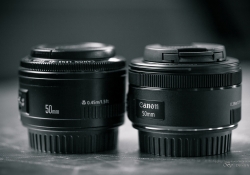


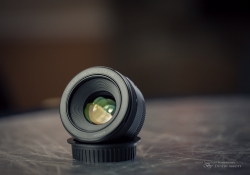
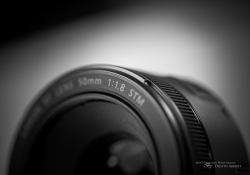
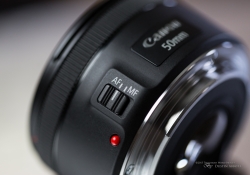

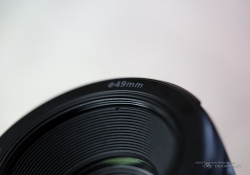

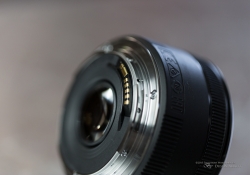
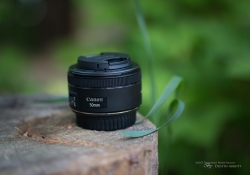






















































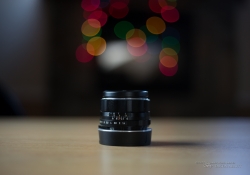
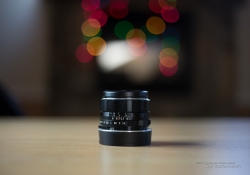
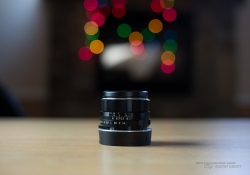
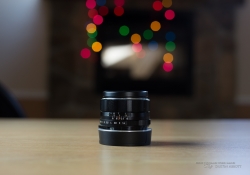
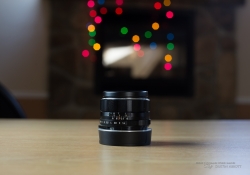
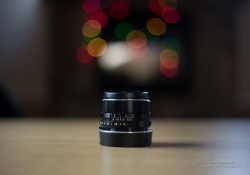
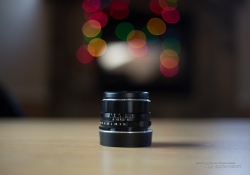
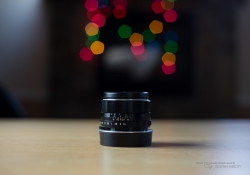

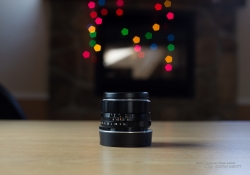
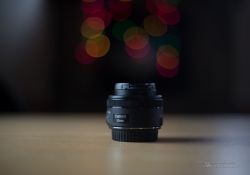
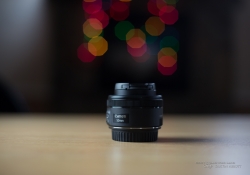
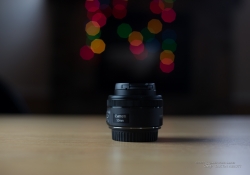
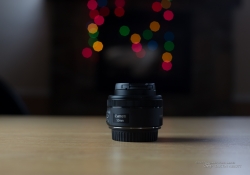
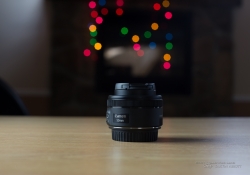






























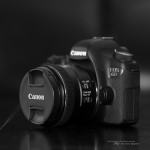
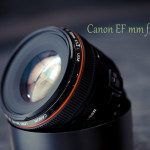
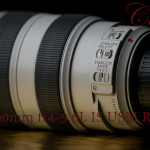




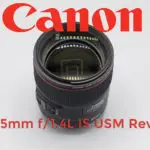


Thanks for the review!
Will certainly add this to my collection 🙂
spotted a little error in the bokeh test: The SMC Takumar produces OCTAGONal bokeh not hexagonal, which would be the result of a 6-bladed aperture.
ps: I bought a LED chain from IKEA just to do that bokeh test too, with my newly acquired collection of fifties (Zeiss Tessar 2.8, Zeiss Pancolar 1.8, S-M-C Takumar 1.4 and Helios 44-2 "zebra", plus the Yongnuo 50/1.8)
Doh! I knew that as I was typing it and somehow still put the wrong thing! Thanks. How does the Yongnuo stack up?
I have the original version (Mk 1) of the nifty fifty bought in the late 1980s, the build quality is very, very much better than the plastic fantastic, and it had the focusing scale window. But it was my first major investment in a camera system as a student! So it didn't see much actons.
Then in recent years, Canon brought down the price of the plastic fantastic, so I bought myself 2 more copies to use, in case 1 broke! It proved a worth while move as the cheap price made me carry it wherever I go, thus enabling me to capture some fantastic shots!
You will definitely find the new lens an improvement in a number of ways, including build quality. It’s a great optic for the price!